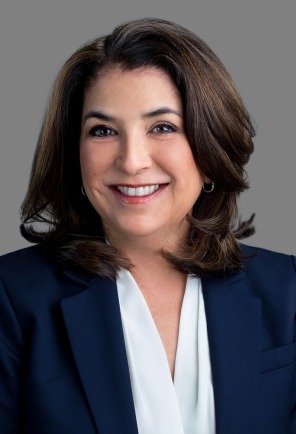The New “Normal” for Virtual Medicine
Alvarez & Marsal Healthcare Industry Group surveyed healthcare leaders on the effect the COVID-19 pandemic has had on virtual care and its sustainability post-pandemic.
Introduction
“These are boom times for digital doctors” – Wall Street Journal.[i]
The COVID-19 pandemic accelerated the use of “telehealth” services by healthcare organizations that had previously taken a slow or narrow approach to virtual healthcare. With physician offices and outpatient clinics closed, almost overnight, physicians and other healthcare providers began providing patient care through some form of telehealth - video, telephonic, or both. This quick dive into the deep-end of telehealth services was supported by federal government actions to improve reimbursement, increase funding and ease provider licensing barriers. Just like takeout dinners and walking down “one-way” grocery store aisles, seeing your doctor by Zoom became another “new normal” during the pandemic.
Alvarez & Marsal’s Healthcare Industry Group (A&M) recently spoke with several healthcare and telehealth leaders to learn how their organizations increased the use of telemedicine during the COVID-19 crisis. We also conducted a survey of a number of leading healthcare systems to see how the pandemic motivated them to implement or expand their telehealth programs. We also asked survey respondents for their outlook on how telehealth fits into care delivery in a post-pandemic world. This article shares insights from those conversations and survey findings.
Telehealth Background - Pre-COVID
“Telehealth” services can be varied in technical complexity, from a simple phone or video conference, to video consults among physicians sharing diagnostic images or videos, to “remote patient monitoring,” which can include things such as blood glucose or cardiac monitoring.
Pre-pandemic, telehealth services were at best minimally utilized by most healthcare providers. A Peterson-KFF Health System Tracker analyzed a sample of health benefit claims from enrollees in large employer health plans with outpatient services and found that only 2.4 percent had utilized at least one telehealth service in 2018. The survey also found low utilization of telemedicine by Medicare and Medicaid beneficiaries. [ii]
One of the primary barriers to universal implementation of telehealth has been low reimbursement by both private payors and government programs. Telemedicine growth has also been limited by a lack of uniform coverage policies across insurers and states.
Providers have struggled with the financial resources required to effectively implement robust telehealth programs as it requires investments in time, money and change management efforts, all of which have been compounded by traditionally low or non-existent reimbursement rates. Providers also grappled with difficult questions: Would patients be able to manage the technology, and would they like it? How would quality be measured and assured? And, how would providers regard the experience of caring for patients on a screen instead of an exam table?
According to a longtime observer of telehealth, Martin A. Samuels, M.D., Professor of Neurology at Harvard Medical School and Chair Emeritus of the Department of Neurology at Brigham and Women’s Hospital (BWH), “Telehealth has been around for some time, but was not widely adopted…we knew from some [pilot studies] in rural areas that it was a viable option for more of the patient population. The [COVID-19] pandemic put that to the test, and I do not think we will go back to telemedicine as it was before COVID-19.”
Telehealth During the Pandemic
Out of necessity, the traditional questions posed by healthcare organizations on whether they should expand telehealth – including, resource investment, patient and provider adoption and satisfaction –were quickly silenced as organizations pivoted quickly to deliver safe care through a remote format. As Dr. Samuels succinctly put it: “COVID-19 has given us the opportunity to grow this.”
A survey of A&M’s healthcare clients indicated that two-thirds of respondents had a telehealth program before the pandemic started. The top reasons for implementing programs was patient access and satisfaction. The same respondents reported that use of their telehealth services increased by 25 to 50 percent once the COVID-19 crisis hit; and patient satisfaction followed. More than 60 percent of survey participants reported positive feedback from patients who used telemedicine services during the pandemic.
According to the Assistant Secretary for Planning and Evaluation (ASPE) for the United States Department of Health and Human Services (HHS), Medicare fee-for-service in-person visits for primary care fell precipitously in mid-March 2020 at the start of the COVID-19 public health emergency. In office visits began to rise slowly again in mid-April through May 2020. The HHS ASPE report noted that 43.5 percent of Medicare primary care visits were provided via telehealth in April, compared to less than one percent before the public health emergency was declared in February 2020 (0.1%).[iii]
In the same ASPE report, HHS noted that, “among major urban areas, the proportion of total primary care visits delivered by telehealth in April ranged from one third in Phoenix to nearly two-thirds in Boston. Cities with more COVID-19 hospitalizations such as New York, Detroit and Boston had a higher uptake of telehealth in primary care visits along with San Francisco, which avoided the initial COVID-19 surge in the Spring. This suggests telehealth is partly driven by concerns with COVID-19, but also patient and provider readiness for telehealth.”[iv]
These statistics on telehealth use at the start of the pandemic in the United States were also borne out by Teladoc (NYSE: TDOC), a, virtual health company. Teladoc reported that in the first quarter of 2020, total virtual visits exceeded 2 million, representing growth of nearly 90% as compared to the first quarter of 2019.[v] In the second quarter of 2020, the company reported that total visits increased year-over-year by 203% to 2.8 million.[vi]
As HHS Secretary Alex Azar stated at an event for The Hill newspaper on July 9, 2020: “Telehealth is one we've wanted to do for so long, but Congress has been unable to actually change the Social Security Act to make Medicare and Medicaid amenable to telehealth."
"Now [that telehealth is] available…I think we'd have a revolution if anyone tried to go backwards on this," Azar said. "This is now, I think, an embedded part of our healthcare system.” Accord to Azar, HHS plans to, "do everything we can by regulation to keep the gains that we've had to put the patient, that doctor relationship, the hospital relationship in the center."[vii]
Regulatory Relaxation and Reimbursement Changes
Telehealth growth during the pandemic was facilitated by the lifting of several regulatory and reimbursement barriers. At the onset of the Public Health Emergency (PHE), which was declared on January 31, 2020, HHS invoked its authority under section 1135 of the Social Security Act (“1135 Waivers”) to temporarily waive or modify certain Medicare, Medicaid, Children’s Health Insurance Program (CHIP) and Health Insurance Portability and Accountability Act (HIPAA) requirements for telehealth services, allowing greater access to care for program beneficiaries.
Through an 1135 Waiver, the Centers for Medicare & Medicaid Services (CMS) broadened access to telehealth by allowing a wider range of services to be provided and expanding the types of providers eligible to bill Medicare for their professional services. CMS also waived geographic site restrictions and established patient requirements, thereby enabling payment for office, hospital and even the home for new and existing patients.
As part of the PHE declaration, CMS also significantly expanded the types of telehealth services eligible for reimbursement. For Medicare beneficiaries these include evaluation and management visits, mental health counseling and preventative health screenings. These visits are reimbursed at the same rate as regular in-person visits. Additionally, HHS Office of Inspector General provided flexibility for healthcare providers to reduce or waive cost-sharing for telehealth visits paid by federal programs.
Privacy and security requirements under HIPAA were also relaxed by HHS to enable “covered health care providers” to deliver telehealth services using readily accessible and popular “non-public facing” remote communication, such as FaceTime, Facebook Messenger video chat, Zoom, or other platforms of this nature. The HHS Office of Civil Rights indicated that it is exercising its enforcement discretion and not imposing penalties for noncompliance with HIPAA Rules in connection with the good faith provision of telehealth.
Models for Making Telehealth Work
The operational playbook for telehealth use was effectively first written by the Veterans Administration (VA). David Shulkin, M.D., former Secretary of U.S. Department of Veteran Affairs and now a Senior Advisor to A&M, made implementation of telemedicine a focus of his tenure as VA Secretary. Because of a crisis with access to care at the VA, Dr. Shulkin developed and implemented a telehealth program in 2017 to ensure that every Veteran could access healthcare anywhere in the county. Execution of such a large scale program first required the same loosening of regulatory restrictions and reimbursement support later enacted at the start of the pandemic. In the Alvarez and Marsal Podcast Series, The Rise of Telehealth Amidst a Global Pandemic, Dr. Shulkin noted that telehealth was “the right medicine” for the problems caused by the pandemic.
In March at SLUCare, a large Midwestern faculty practice affiliated with Saint Louis University, outpatient visits dropped 90 percent overnight with the “stay at home” lockdown of the city. Without a telehealth platform in place, patients were at risk.
Karen Davis, an A&M Managing Director serving as interim CEO of SLUCare, worked with the medical group practice leadership to stand up their telehealth program in a short window of time to ensure support was provided for their patients. "Without the ability to provide healthcare through telehealth, the need for healthcare services would have gone unmet and patient outcomes would have been negatively impacted," Davis said.
SLUCare implemented a telehealth program in a matter of two weeks. Leaders went to the local Best Buy, bought computers, trained staff and physicians and connected with patients via Zoom. Concerned about high risk patients without internet access, medical group leaders worked with churches to set up “tele-hubs” in the community. With personnel to support the visits and maintain a clean environment, patients who could not risk exposure and make a trip to the university, received required care. Some patients were so pleased with the option that they immediately made their telehealth follow-up appointment.
Dr. Samuels said BWH has given most patients a telehealth choice. They can come in for an in-person visit or opt for a teleconference with their physician or provider.
According to Lewis Levy, M.D., Chief Medical Officer for Teladoc, “the COVID pandemic has propelled us 10 years into the future of medicine.” He also noted that the value proposition of telehealth has changed. Telehealth used to provide more access to minor medical care whereas now it has proven its ability to deliver routine and specialty care while not exposing doctors or patients to COVID-19. It has taken the telehealth platform from a convenience to a life-saving resource. Dr. Levy added that during the pandemic he has seen client organizations drop co-pays to encourage consumers to access virtual care with a resultant acceleration of engagement efforts.
Sustaining The Gain
For federal programs like Medicare and Medicaid the case for telehealth expansion is clear. Telehealth promotes population health and risk management of patients with chronic conditions by following patients more frequently in a lower cost setting. Patients with chronic conditions may be seen more frequently, ideally to avoid deterioration in condition. Properly used with other technology aids such as heart rate, blood pressure, glucose and oxygen monitors, for example, – providers can get a better, real-time view of their patient’s daily vital signs and other important clinical data.
For patients in remote and rural areas, telehealth services allow them access to specialists, such as ophthalmologists, neurologists and psychiatrists, otherwise only accessible in large cities and academic medical centers.
Although the COVID-19 pandemic appears likely to continue for some time, even as cases subside through the use of non-pharmaceutical interventions (e.g., masking, social distancing, etc.) and eventually through the introduction of a vaccine and as COVID-19 cases become more treatable and mortalities are lessened through the addition of new therapeutics additional preventative measures, the lessons of the pandemic, especially around telehealth, will create noticeable change across the healthcare industry.
On August 3, 2020, President Trump signed an executive order directing HHS to draft a regulation on how Medicare telehealth benefits provided during the PHE could be made a permanent part of the Medicare program.[viii] CMS followed suit in its proposed Physician Fee Schedule for calendar year 2021 by proposing to add several telehealth services to the Physician Fee Schedule on a permanent basis including: primary care evaluation and management services; group psychotherapy; neurobehavioral status exams; care planning for patients with cognitive impairments; home visits; nursing home visits and emergency room visits.[ix]
The Commonwealth Fund reported that “telemedicine volume grew initially [during the pandemic] but plateaued.” It theorized that physician practices and patients may be reluctant or may still be learning how best to use it.[x] But as in-person visits started to resume from mid-April through May, the use of telehealth in primary care somewhat declined but appeared to have leveled off at a persistent and significant level by the beginning of June. This “persistence” should signal to providers that investment in sustaining the gains and growth they have experienced with telehealth programs is wise.
To continue the development of a robust program, telehealth supported services should not be so narrow that the program becomes siloed and that key linkages to other services or organizational strategy are missed. A successful telehealth program should also include meaningful connections to services such as care coordination.
Because telehealth programs will be embedded in various service lines and specialties, leadership and governance should be given careful consideration. Strong telehealth governance must support program advancement, growth and innovation and must nurture telehealth across service and specialty lines through communication, training and development. As telehealth matures within an organization, the ongoing systematic review and prioritization of telehealth services must be carefully considered.
Activities core to a thriving telehealth program include active support of frontline clinicians through training and communication and ensuring sound and reliable technology. A developing telehealth program must be nurtured through effective internal communication and education as well as external promotion and education of the patient population. In the post-COVID-19 world, more patients will be aware of the availability of telehealth however, telehealth must continue to be promoted on the organization’s website and in marketing outreach to patients, and, if applicable, when patients call to schedule appointments.
In addition to patient satisfaction, provider satisfaction with telehealth programs should also be carefully tracked. Lyle Berkowitz, M.D., the Chief Executive Officer of Back9 Healthcare Consulting, has helped several large, well-known healthcare organizations implement telehealth programs. He reported that with the uptick in telehealth usage during the pandemic, physicians recognized the value for patients but also enjoyed the opportunity to work from home provided by this innovative approach. Dr. Berkowitz noted that while very few physicians wish to utilize telehealth exclusively, many are interested in balancing their time between telehealth and in-person care. Assuming current reimbursement levels are maintained or remain similar, he predicts that coming out of the COVID-19 crisis between 20 and 30 percent of primary care visits will be virtual.
Finally, our survey respondents and the collective insights from telehealth experts with whom we spoke highlighted that in developing virtual health programs health systems and physician practices must promote and guard against potential abuses by putting metrics in place to ensure that quality of care is appropriate, utilization is managed, and health information is protected with the same scrutiny as if care was provided in a hospital or physician’s office.
Conclusion: No Going Back from the New Normal
In July, as Teladoc’s CEO, Jason Gorevic, informed investors on the issue of virtual visits, even in states where in-office visits were resuming, “the pandemic has accelerated the widespread adoption of virtual care, and I'm confident there's no going back.”[xi]
The number of patients who previously had never used a telehealth service, coupled with positive patient satisfaction scores, indicates that patient reluctance to telehealth has been crossed. With forthcoming actions by CMS to make the temporary Medicare telehealth benefit and payment into a permanent part of the program, healthcare providers can more confidently maintain and expand their telehealth offerings, knowing that reimbursement will follow. And where Medicare reimbursement goes, private payors typically follow.
Physicians, hospitals and healthcare systems, as well as payors, should use the lessons learned over the past few months during this pandemic, to continue to expand and sharpen their virtual health activities as part of their overall engagement and interactions with patients..
[i] “The Doctor Will Zoom You Now,” Wall Street Journal, April 27, 2020, p. A 16.
[ii] https://www.kff.org/womens-health-policy/issue-brief/opportunities-and-barriers-for-telemedicine-in-the-u-s-during-the-covid-19-emergency-and-beyond/
[iii] https://aspe.hhs.gov/system/files/pdf/263866/HP_IssueBrief_MedicareTelehealth_final7.29.20.pdf
[iv] https://aspe.hhs.gov/system/files/pdf/263866/HP_IssueBrief_MedicareTelehealth_final7.29.20.pdf
[v] https://ir.teladochealth.com/news-and-events/investor-news/press-release-details/2020/Teladoc-Health-Reports-Second-Quarter-2020-Results/default.aspx
[vi] https://seekingalpha.com/article/4341266-teladoc-healths-tdoc-ceo-jason-gorevic-on-q1-2020-results-earnings-call-transcript?part=single
[vii] Politico Morning e-Health, July 10, 2020, https://www.politico.com/newsletters/morning-ehealth/2020/07/10/fcc-exhausts-200m-pandemic-fund-789071
[viii] https://www.whitehouse.gov/presidential-actions/executive-order-improving-rural-health-telehealth-access/
[ix] https://www.cms.gov/newsroom/press-releases/trump-administration-proposes-expand-telehealth-benefits-permanently-medicare-beneficiaries-beyond






